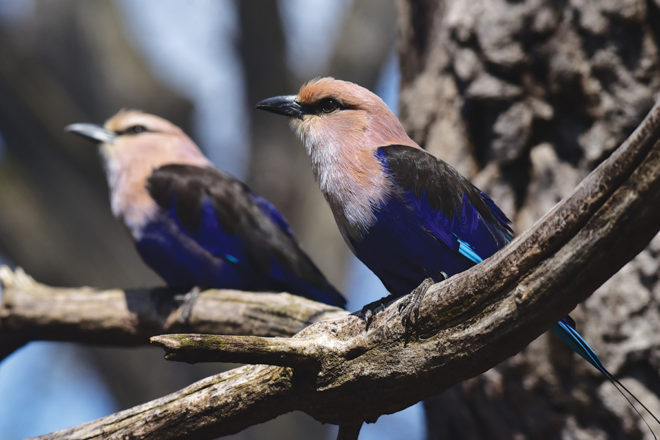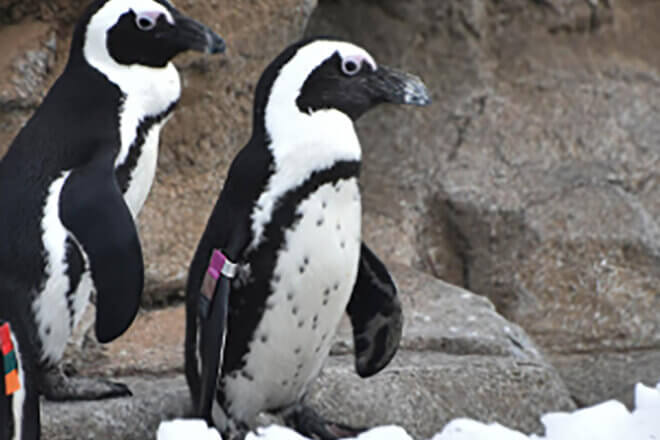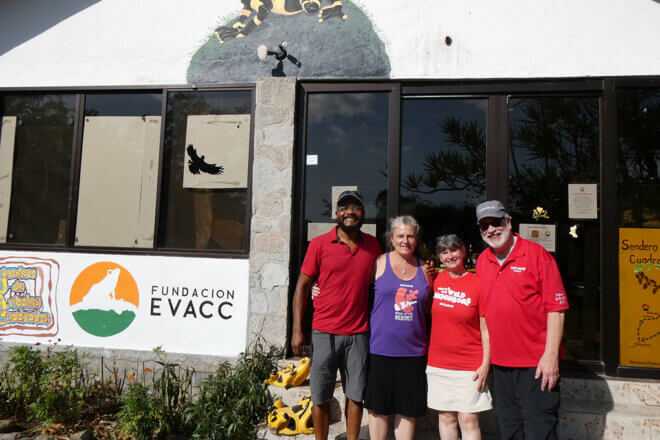Cases of avian flu have been confirmed across the US and Canada, including here in Maryland. This strain of the disease is highly contagious and lethal to birds. As a precautionary measure, we have closed our aviaries and modified exhibits to protect our birds. In consultation with the Maryland State Veterinarian, most of our bird species have been returned to their exhibits after being sequestered behind-the-scenes for the past several months. We will continue to monitor case counts and may need to move birds back indoors as the situation warrants.
Frequently Asked Questions
Q: What is Avian Influenza?
A: Avian influenza, also known as the bird flu, is a highly contagious virus that infects wild and domestic birds. It’s typically spread by wild birds during seasonal migrations.
Bird Flu has two different strains: Low Pathogenicity Avian Influenza (LPAI), which causes no, or very low symptoms in most cases, and High Pathogenicity Avian Influenza (HPAI), which is deadly and poses a significant risk to domestic and farm birds. This more dangerous HPAI strain (H5N1) is what’s currently spreading.
HPAI is a particular concern to domestic and commercially-raised poultry resulting in the loss of flocks and causing serious financial harm to the poultry industry. Human infection with avian influenza viruses are extremely rare according to the Centers for Disease Control and Prevention. Only one case of human infection with the H5N1 strain of highly pathogenic avian influenza has been reported in the United States.
Q: Where are the current cases of Bird Flu and which strain has been detected?
A: Since December 2021, HPAI has been confirmed across the US and Canada, with documented cases in more than three quarters of US states, including Harford County, Maryland.
Q: What is the concern around the virus?
A: HPAI is deadly to domestic poultry and in many cases, entire flocks have had to be culled in an effort to stop its spread. For this reason, HPAI is a reportable disease, which means that a veterinarian has a legal duty to report any birds with suspicious signs to the Maryland State Veterinarian and US Department of Agriculture (USDA) who then dictate the responses when Avian Flu is confirmed.
Extensive Federal and international regulations are in place to safeguard the agricultural and human food supply, the US economy, and trade.
Q: Are people at risk from Avian Flu?
A: The Centers for Disease Control and Prevention considers the risk to the general public to be very low, even for HPAI. Human infection with avian influenza viruses are rare according to the Centers for Disease Control and Prevention. Only one case of human infection with the H5N1 strain of highly pathogenic avian influenza has been reported in the United States.
Affected birds shed the virus in their saliva, mucus, and feces. Avoiding direct animal or waste contact, and frequent hand washing are effective at keeping people healthy.
Q: Are Zoo birds at risk?
A: HPAI is deadly to all birds, including the rare and endangered species at the Zoo, so we take it very seriously.
Q: What is the Maryland Zoo doing to keep its birds safe?
Q: We have activated a detailed, multi-tiered response plan that has been reviewed by the US Department of Agriculture, the Maryland State Veterinarian, the Maryland Department of Natural Resources, and the Maryland Department of Health. We continue to work closely with them on situational monitoring and response.
For the past several months, birds that were more likely to come in contact with migrating waterfowl had been kept indoors housing and off exhibit. At this time, most of our birds have been returned outside and are visible to the public.
We have made modifications to outdoor exhibits to decrease the risk of potential exposure to the virus. In addition, and because the disease can be tracked on shoes, Zoo aviaries remain closed and indoor contact with birds is limited to a small number of staff.
Q: What is the Zoo doing to protect its staff, visitors, and volunteers?
A: Human infection with avian influenza viruses are very rare. Still, just as we do with our birds, we monitor the health of our staff and volunteers with protocols very similar to COVID-19. Additional precautions are taken by staff members who work directly with our birds, including the use of PPE along with special handling and sanitation procedures.
Q: How long could the threat of Avian Flu last?
A: Typically, outbreaks coincide with the spring and fall bird migrations. The strict measures put in place by the federal and state governments typically limit the duration of an event. As with any virus, there is no way to pinpoint an endpoint, but in past outbreaks in the United States, intensive management and containment by the US Department of Agriculture continued through the summer months.
Q: I keep chickens on my property. What should I do?
A: Anyone who owns domestic poultry or is around wild birds should read the USDA’s recommended steps to increase the biosecurity of backyard poultry flocks.






Share this article